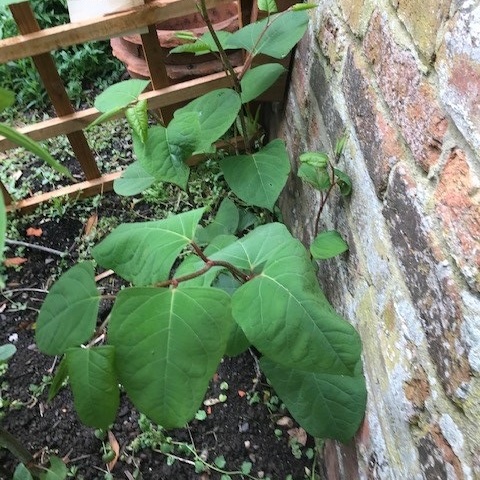Japanese knotweed typically sprouts in April or May - yet in recent years, the plant has been visible in the UK from March or even February.

When does Japanese knotweed typically grow?
Japanese knotweed is what’s known as a 'herbaceous perennial'. This means that the plant dies down to the ground by the end of every autumn, but its roots survive underground during the winter season to send up new plant growth in spring the following year.
Knotweed typically begins to sprout in the springtime (between April and March), but it's during the summer months that Japanese knotweed reaches peak growth. In the right conditions, knotweed can actually grow by several centimetres per day; this rapid growth rate is one of the things that makes knotweed such a menace, giving it the ability to take over large plots of land in a relatively short space of time.
If you want to learn a bit more about why exactly Japanese knotweed is so dreaded, our recent blog post Why Is Japanese Knotweed Bad? covers some of the main reasons why the plant has become every homeowner's worst nightmare.
Is knotweed appearing early this year?
As mentioned above, Japanese knotweed usually sprouts in the spring season, between April and May. But by the first day of March 2022, there were knotweed shoots visible in Plymouth. Unfortunately, this seems to be becoming the new normal; for the last few years, Japanese knotweed has been spotted in the UK as early as March or even February.
It's very unusual for plants to change their seasonal growing habits, so why exactly is knotweed sprouting so early? What's causing this notorious weed to change its cycle?
Why is Japanese knotweed sprouting out of season?
There are many factors that could be complicit in knotweed's early arrival. The most probable reason is that we are currently experiencing what’s called a 'false spring'.
A false spring is where temperatures get warmer than average early in the year, leading people (and wildlife) to believe that spring has arrived, only to be followed by an sudden return to cold, wintry weather.
We have recently experienced unseasonably warm weather for this time of year, and as a result, plants like Japanese knotweed may be under the impression that it's later in the year than it actually is. This would explain why knotweed has started to sprout ahead of schedule.
These 'false springs' are becoming more and more common, and there's a possibility that this phenomenon is a result of climate change.
Do you need help with Japanese knotweed?
If you think you might have Japanese knotweed growing on your property, click the link down below to arrange a free survey. Total Weed Control's invasive weed experts will investigate your property and give you an idea of what actions (if any) maybe necessary.
Request a FREE Survey
READ MORE: What What Does Japanese Knotweed Look Like in Spring?
